| Listing 1 - 10 of 11 | << page >> |
Sort by
|
Book
Year: 1991 Publisher: [Place of publication not identified] IEEE Computer Society Press
Abstract | Keywords | Export | Availability | Bookmark
 Loading...
Loading...Choose an application
- Reference Manager
- EndNote
- RefWorks (Direct export to RefWorks)
The Tenth Annual International Phoenix Conference, held in Scottsdale, Arizona in March 1991, maintained the dominant themes of previous conferences, namely computing and communications and the developing synergy between them, and the linkage between industry and academia, particularly as it is mediated by the work being carried out at countless research centers. The proceedings are grouped in seven general sections: computer technology, distributed systems, software systems, communications theory, networking systems, applications, and AI/knowledge engineering. No index. Annotation copyrighted by Book News, Inc., Portland, OR.
Book
Year: 1991 Publisher: [Place of publication not identified] IEEE Computer Society Press
Abstract | Keywords | Export | Availability | Bookmark
 Loading...
Loading...Choose an application
- Reference Manager
- EndNote
- RefWorks (Direct export to RefWorks)
The Tenth Annual International Phoenix Conference, held in Scottsdale, Arizona in March 1991, maintained the dominant themes of previous conferences, namely computing and communications and the developing synergy between them, and the linkage between industry and academia, particularly as it is mediated by the work being carried out at countless research centers. The proceedings are grouped in seven general sections: computer technology, distributed systems, software systems, communications theory, networking systems, applications, and AI/knowledge engineering. No index. Annotation copyrighted by Book News, Inc., Portland, OR.
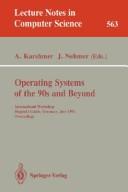
ISBN: 0387549870 Year: 1991 Volume: vol 563 Publisher: Berlin ; New York, NY : Springer-Verlag,
Abstract | Keywords | Export | Availability | Bookmark
 Loading...
Loading...Choose an application
- Reference Manager
- EndNote
- RefWorks (Direct export to RefWorks)
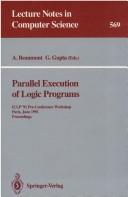
ISBN: 0387550380 Year: 1991 Volume: vol 569 Publisher: Berlin ; New York, NY : Springer-Verlag,
Abstract | Keywords | Export | Availability | Bookmark
 Loading...
Loading...Choose an application
- Reference Manager
- EndNote
- RefWorks (Direct export to RefWorks)
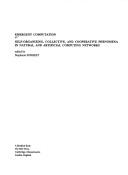
ISBN: 0262560577 Year: 1991 Volume: vol *3 Publisher: Cambridge, Mass. London MIT Press
Abstract | Keywords | Export | Availability | Bookmark
 Loading...
Loading...Choose an application
- Reference Manager
- EndNote
- RefWorks (Direct export to RefWorks)
Parallel processing (Electronic computers) --- Computer networks --- Parallélisme (Informatique) --- Réseaux d'ordinateurs --- Congresses. --- Congrès --- Parallélisme (Informatique) --- Réseaux d'ordinateurs --- Congrès --- Congresses --- Parallel processing (Electronic computers) - Congresses. --- Computer networks - Congresses.
Book
ISBN: 0897914570 9780897914574 Year: 1991 Volume: 26/12 Publisher: ACM
Abstract | Keywords | Export | Availability | Bookmark
 Loading...
Loading...Choose an application
- Reference Manager
- EndNote
- RefWorks (Direct export to RefWorks)
Debugging in computer science --- Electronic data processing --- Parallel processing (Electronic computers) --- Distributed processing --- Information Technology --- Computer Science (Hardware & Networks) --- Debugging in computer science - Congresses --- Electronic data processing - Distributed processing - Congresses --- Parallel processing (Electronic computers) - Congresses
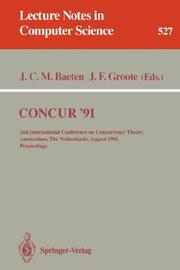
ISBN: 0387544305 3540544305 3540383573 Year: 1991 Volume: 527 Publisher: Berlin ; New York, NY : Springer-Verlag,
Abstract | Keywords | Export | Availability | Bookmark
 Loading...
Loading...Choose an application
- Reference Manager
- EndNote
- RefWorks (Direct export to RefWorks)
CONCUR'91 is the second international conference on concurrency theory, organized in association with the NFI project Transfer. It is a sequel to the CONCUR'90 conference. Its basic aim is to communicate ongoing work in concurrency theory. This proceedings volume contains 30 papers selected for presentation at the conference (from 71 submitted) together with four invited papers and abstracts of the other invited papers. The papers are organized into sections on process algebras, logics and model checking, applications and specification languages, models and net theory, design and real-time, tools and probabilities, and programming languages. The proceedings of CONCUR'90 are available asVolume 458 of Lecture Notes in Computer Science.
Machine theory --- Parallel processing (Electronic computers) --- Automates mathématiques, Théorie des --- Parallélisme (Informatique) --- Congresses. --- Congrès --- 681.3*D13 --- Concurrent programming --- 681.3*D13 Concurrent programming --- Automates mathématiques, Théorie des --- Parallélisme (Informatique) --- Congrès --- Congresses --- Parallel processing (Electronic computers) - Congresses. --- Information theory. --- Computer science. --- Logic design. --- Theory of Computation. --- Computation by Abstract Devices. --- Programming Techniques. --- Programming Languages, Compilers, Interpreters. --- Logics and Meanings of Programs. --- Design, Logic --- Design of logic systems --- Digital electronics --- Electronic circuit design --- Logic circuits --- Switching theory --- Informatics --- Science --- Communication theory --- Communication --- Cybernetics
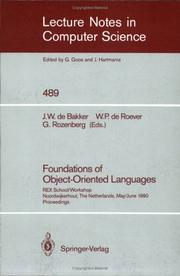
ISBN: 354053931X 038753931X 3540464506 Year: 1991 Volume: vol 489 Publisher: Berlin Springer
Abstract | Keywords | Export | Availability | Bookmark
 Loading...
Loading...Choose an application
- Reference Manager
- EndNote
- RefWorks (Direct export to RefWorks)
Over the last few years, object-oriented programming has been recognized as the best way currently available of structuring software systems. It emphasizes grouping together data and the operations performed on them, encapsulating the whole behind a clean interface, and organizing the resulting entities in a hierarchy based on specialization in functionality. In this way it provides excellent support for the construction of large systems. Up to now, there has been relatively little effort to develop formal theories of object-oriented programming. However, for the field to mature, a more formal understanding of the basic concepts of object-oriented programming is necessary. This volume presents the proceedings of the School/Workshop on Foundations of Object-Oriented Programming (FOOL) held in Noordwijkerhout, The Netherlands, May 28 - June 1, 1990. The workshop was an activity of the project REX (Research and Education in Concurrent Systems).
Programming --- Programming languages (Electronic computers) --- -Object-oriented programming (Computer science) --- -681.3*D20 --- Computer programming --- Object-oriented methods (Computer science) --- Document Object Model (Web site development technology) --- Congresses --- Case studies --- Computerwetenschap--?*D20 --- Object-oriented programming languages --- 681.3*D20 --- Object-oriented languages (Computer program languages) --- OO languages (Computer program languages) --- OOLs (Computer program languages) --- OOP languages (Computer program languages) --- Object-oriented programming (Computer science) --- Object-oriented programming (Computer science) - Congressses. --- Programming languages (Electronic computers) - Congresses. --- Computer science. --- Software engineering. --- Logic design. --- Programming Languages, Compilers, Interpreters. --- Programming Techniques. --- Software Engineering. --- Logics and Meanings of Programs. --- Design, Logic --- Design of logic systems --- Digital electronics --- Electronic circuit design --- Logic circuits --- Machine theory --- Switching theory --- Computer software engineering --- Engineering --- Informatics --- Science --- Language pool --- Lotos
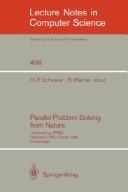
ISBN: 3540541489 3540706526 Year: 1991 Volume: vol 496 Publisher: Berlin Springer
Abstract | Keywords | Export | Availability | Bookmark
 Loading...
Loading...Choose an application
- Reference Manager
- EndNote
- RefWorks (Direct export to RefWorks)
With the appearance of massively parallel computers, increased attention has been paid to algorithms which rely upon analogies to natural processes. This development defines the scope of the PPSN conference at Dortmund in 1990 whose proceedings are presented in this volume. The subjects treated include: - Darwinian methods such as evolution strategies and genetic algorithms; - Boltzmann methods such as simulated annealing; - Classifier systems and neural networks; - Transfer of natural metaphors to artificial problem solving. The main objectives of the conference were: - To gather theoretical results about and experimental comparisons between these algorithms, - To discuss various implementations on different parallel computer architectures, - To summarize the state of the art in the field, which was previously scattered widely both among disciplines and geographically.
Computer architecture. Operating systems --- Neural networks (Computer science) --- -Parallel processing (Electronic computers) --- -681.3*C12 --- 681.3*I26 --- Congresses --- Multiple data stream architectures (multiprocessors): MIMD; SIMD; pipeline and parallel processors; array-, vector-, associative processors; interconnection architectures: common bus, multiport memory, crossbar switch --- Learning: analogies; concept learning; induction; knowledge acquisition; language acquisition; parameter learning (Artificial intelligence)--See also {681.3*K32} --- 681.3*I26 Learning: analogies; concept learning; induction; knowledge acquisition; language acquisition; parameter learning (Artificial intelligence)--See also {681.3*K32} --- 681.3*C12 Multiple data stream architectures (multiprocessors): MIMD; SIMD; pipeline and parallel processors; array-, vector-, associative processors; interconnection architectures: common bus, multiport memory, crossbar switch --- Parallel processing (Electronic computers) --- 681.3*C12 --- Parallel processing (Electronic computers) - Congresses. --- Neural networks (Computer science) - Congresses. --- Mathematics. --- Computer network architectures. --- Information theory. --- Computer science. --- Computer software. --- Applications of Mathematics. --- Computer System Implementation. --- Theory of Computation. --- Computation by Abstract Devices. --- Algorithm Analysis and Problem Complexity. --- Processor Architectures. --- Software, Computer --- Computer systems --- Informatics --- Science --- Communication theory --- Communication --- Cybernetics --- Architectures, Computer network --- Network architectures, Computer --- Computer architecture --- Math
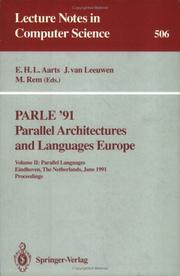
ISBN: 3540541519 0387541519 0387541527 3540541527 3540474714 3540474722 9783540541523 9783540541516 9780387541525 9780387541518 Year: 1991 Volume: 505-506 Publisher: Berlin ; New York, NY : Springer-Verlag,
Abstract | Keywords | Export | Availability | Bookmark
 Loading...
Loading...Choose an application
- Reference Manager
- EndNote
- RefWorks (Direct export to RefWorks)
Algorithmes --- Algorithms --- Algoritmen --- Computer architecture --- Computerarchitectuur --- Ordinateurs--Architecture --- Parallel programming (Computer science) --- Parallelle programmering (Informatica) --- Programmation parallèle (Informatique) --- Parallel computers --- Ordinateurs parallèles --- Congresses --- Congrès --- -Congresses --- -681.3*C12 --- 681.3*D32 --- 681.3*D34 --- Electronic digital computers --- Multiple data stream architectures (multiprocessors): MIMD; SIMD; pipeline and parallel processors; array-, vector-, associative processors; interconnection architectures: common bus, multiport memory, crossbar switch --- language classifications: applicative languages; data-flow languages; design languages; extensible languages; macro and assembly languages; nonprocedural languages; specialized application and very high-level languages (Programminglanguages) --- Processors: code generation; compilers; interpreters; optimization; parsing; preprocessors; run-time environments; translator writing systems and compilergenerators (Programming languages) --- 681.3*D34 Processors: code generation; compilers; interpreters; optimization; parsing; preprocessors; run-time environments; translator writing systems and compilergenerators (Programming languages) --- 681.3*D32 language classifications: applicative languages; data-flow languages; design languages; extensible languages; macro and assembly languages; nonprocedural languages; specialized application and very high-level languages (Programminglanguages) --- 681.3*C12 Multiple data stream architectures (multiprocessors): MIMD; SIMD; pipeline and parallel processors; array-, vector-, associative processors; interconnection architectures: common bus, multiport memory, crossbar switch --- Ordinateurs parallèles --- Congrès --- Europe --- Languages --- Parallel processing (Electronic computers) --- Computer science. --- Computer network architectures. --- Information theory. --- Computer Communication Networks. --- Software engineering. --- Computer system performance. --- Processor Architectures. --- Computer System Implementation. --- Theory of Computation. --- Special Purpose and Application-Based Systems. --- System Performance and Evaluation. --- Computer software engineering --- Engineering --- Communication theory --- Communication --- Cybernetics --- Architectures, Computer network --- Network architectures, Computer --- Informatics --- Science --- Parallel computers - - Congresses --- -Parallel computers
| Listing 1 - 10 of 11 | << page >> |
Sort by
|

 Search
Search Feedback
Feedback About UniCat
About UniCat  Help
Help News
News